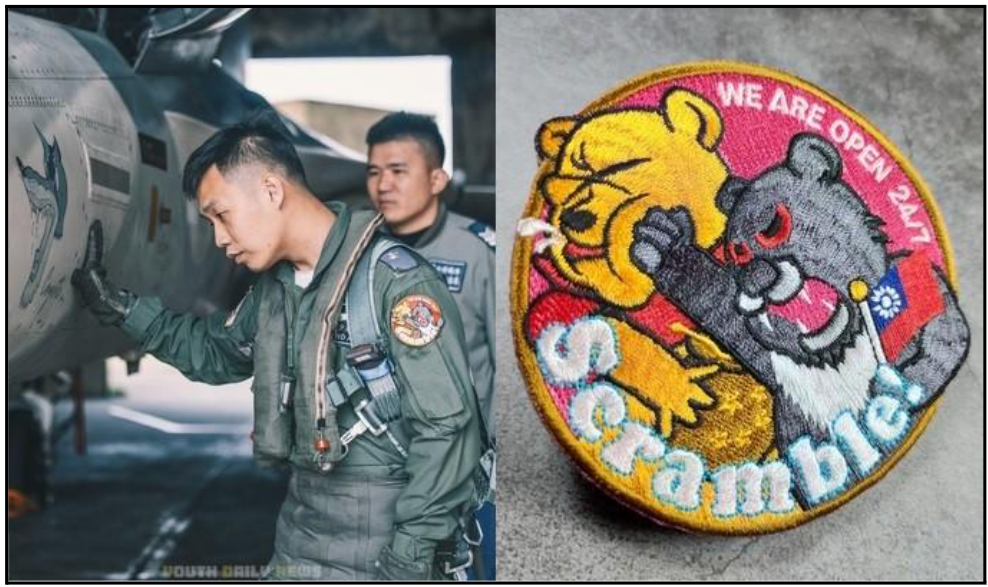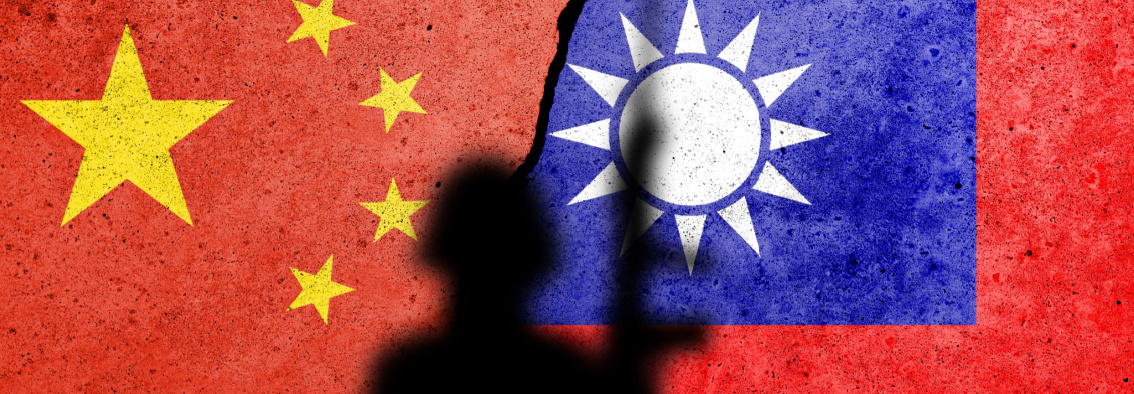Considerable discussion has taken place in recent years regarding Taiwan’s “Overall Defense Concept” (ODC, 整體防禦概念), a series of ideas most closely associated with former Republic of China (ROC) Chief of the General Staff Admiral Lee Hsi-ming (李喜明). During Admiral Lee’s tenure (2017-2019), the ODC was promoted as a new vision for Taiwan’s defense: one that placed an emphasis on defensive warfare in the littoral zone, and which emphasized acquiring a larger number of smaller and dispersible platforms possessing the capability to strike against the superior military resources of China’s People’s Liberation Army (PLA). While the ODC appears to have fallen out of official favor within Taiwan’s Ministry of National Defense (MND, 中華民國國防部) (see discussion here), at least some of the ODC’s focus on “asymmetry” has influenced Taiwan’s current defense planning.
The emergence of the ODC connected to an earlier concept that had long been promoted by many US-based defense commentators. In 2008, US Naval War College Professor William Murray first articulated what became known colloquially as the “Porcupine Strategy” for Taiwan’s defense. The central idea was that Taiwan should focus on the defensive capabilities that would make it difficult for an invader to overwhelm and incorporate it. Using the metaphor, Taiwan’s defense planners were advised that their defense posture should be like that of a porcupine, a large rodent that protects itself from predators with a coat of sharp spines or quills.
The concept is clear enough, but the porcupine metaphor is limited by the passive nature of the animal’s defensive behavior: the spines and quills cannot be launched or projected, and porcupines are not animals known for their agility. It is not representative of the posture that the ODC calls for. Furthermore, Taiwan’s armed forces do not seem to be attracted to the porcupine as a symbol. (A quick perusal of Taiwan squadron patches will reveal a range of cobras, dragons, devils, spectral dogs, and others, but no porcupines.) The porcupine’s range is also generally limited to North America, so it is not even a native Asian symbol. Accordingly, it is time to replace this zoological metaphor with one that is more active and aggressive—and one better aligned with the more proactive posture called for in the Overall Defense Concept.

Image: A Taiwan Air Force pilot wearing an unofficial patch that became popular in Spring 2023, which depicts a Formosan black bear punching Winnie the Pooh (symbolic of Chinese leader Xi Jinping [習近平]). While there are many such animal metaphors common among the iconography of Taiwan’s armed forces, the porcupine has not been a popular choice. (Image source: Taiwan News)
The Precision Strike Regime and What It Means for Taiwan’s Defense
Taiwan seeks an active defense, focusing on “denial” of territory instead of “control” of it. Mission kills and attacking the enemy’s operational centers of gravity instead of an attrition fight are in order. An excellent “draft” paper by Admiral Lee calls for an active defense capability, replete with asymmetric operational concepts and capabilities.
Today’s precision strike regime—which combines pervasive, ubiquitous surveillance with high speed weapons accurate at distance—must be harnessed to Taiwan’s advantage. Operating within that regime demands that Taiwan’s armed forces assume a widely distributed, operationally resilient posture. Forces must be agile, mobile, and hostile, with precision weapons that engage at distance to strike enemy forces before they can close the gap on Taiwan or any of its numerous outlying islands. The close fight is always possible, but an aggressive, active defense can prevent that or greatly increase the odds in Taiwan’s favor. The porcupine is not known for any of those traits, and a passive defense posture is not attractive or possible.
The Honey Badger: a Better Metaphor for the Defense Taiwan Needs
Fortunately, Asia hosts a carnivorous mammal known for its strength, ferocity, and aggressive attitude when facing down predators. It has a high pain tolerance, seemingly immune to toxic venom and bee stings. It is the honey badger, an animal with an impressive internet and YouTube presence. Younger generations find it very appealing. An online encyclopedia offers an apt description of this creature’s active defense as follows:
Honey badgers are also well known for their tremendous courage and fearlessness. They have been observed fighting, killing, and eating extremely venomous snakes as well as chasing adult lions from their territory. Honey badgers are relatively slow compared to other carnivores found in their region, so their best form of defense is offence. Their strong jaws, sharp teeth and claws and their ability to rapidly move backwards makes them an extremely formidable foe (emphasis added).
The small but fierce honey badger is a far more apt metaphor for the defense posture Taiwan needs, in contrast with the prickly but passive porcupine.
What Does “Asymmetry” Mean for Taiwan?
Taiwan is frequently urged by defense commentators to seek “asymmetry,” an ill-defined term that has been devalued by being applied to certain weapons. (One of the authors has previously offered some discussion as to what this vague term might mean for Taiwan in a previous article.) Both weapons systems and operational concepts may be symmetric or asymmetric, depending upon context. Of course, some weapons are more readily applicable to asymmetric operational concepts—but we must develop the appropriate concepts and then apply the weapons to them, rather than looking at one or another weapon as some asymmetric panacea that will magically redeem flawed concepts.
“Smart” weapons, especially if they are small and agile, are often described as “asymmetric” in comparison to larger (and likely more expensive) “conventional” weapons. As with any instrument or tool, it comes down to how they are used. “Asymmetry” as applied to operational concepts and tactics can be, and must be, taught to commanders at all levels—to include non-commissioned officers likely to be commanding widely distributed small units under fire.
Asymmetry demands a new look. A nation’s forces are variously suited for space, land, air, sea, or undersea environments. They may exist, sequentially and simultaneously, in one of four modes. These start with production, where a nation recruits and trains the force while manufacturing the necessary weapons and equipment. This is also where a nation develops the strategic, operational, and tactical concepts it needs. Next is logistics, where fixing, fueling, eating, and sleeping occur. Following that is operations, where forces move toward conflict and come into contact with the enemy. The tactical state is the one in which where the master arming switch is on, and weapons are fired. This is also where tactical maneuvering and intelligence gathering occur. One can be attacked in any mode of existence, but shooting happens only in the tactical mode.
For example, an airplane versus another airplane in the tactical mode is a symmetric engagement (as is ship versus ship, etc.), in which both sides can shoot. Such confrontations are staples of war movies, and are the costliest form of combat engagements. A first degree of asymmetry occurs when a ship fires at an airplane, an airplane attacks a ship, or a ground unit attacks a ship—all examples of units deployed and operating in the tactical mode, though in differing realms of combat.
Substantially higher degrees of effective asymmetry are available. Asymmetric, non-tactical engagements offer the shooter the greatest advantage because the target is unable to return fire. Such engagements occur when forces in the tactical mode engage enemy forces in the operations, logistics, or production modes. Reduced to their essence, they can be described as shooting at an enemy unable to shoot back. For a modern example, look no further than the early phase of the Ukraine war, when small, widely distributed Ukrainian ground units in the tactical mode used Javelin missiles to destroy the fuel tankers (logistics mode) sustaining the Russian armored forces. [1]
Conclusions
Lest all of these considerations be written off as needlessly academic matters of military theory, we would argue that Taiwan and its allies face daunting odds. The entire population of Taiwan, and its friends, must be given reason to believe that Taiwan’s people and armed forces can prevail against the numerical odds, “foiling the PLA’s mission of successfully invading and exerting political control over Taiwan.“
Aviation and naval forces forces have some challenges, but ground forces need immediate action as well. It is imperative to develop the ability of the Taiwan Army and Marine Corps to play a meaningful and decisive role in the defeat of an invasion before it reaches Taiwan’s shore. Modern operational concepts, combined with the right weapons, are needed. Recognizing this, Taiwan Defense Minister Chiu Kuo-cheng (邱國正) is seeking “range, precision, and mobility” for his forces. Small, widely distributed, operationally resilient, agile, and well-led units equipped with appropriate weapons will meet the minister’s edict and be decisive. Together with support from sea and air forces, they can deny the PLA effective control of the sea. Such a capability would also reverse centuries of battlefield practice, allowing ground forces to inflict a larger share of the killing, while suffering a smaller share of the dying, than ever before. Such a “honey badger strategy” would serve Taiwan well.
The main point: While past arguments for a “porcupine strategy” for Taiwan’s defense were not without merit, the concept is ultimately insufficient. Instead, Taiwan should adopt a “honey badger strategy,” proactively and aggressively transforming its armed forces to enable them to halt a Chinese attack before it can make landfall.
[1] Readers seeking a more fulsome description of this concept can find it in: Lt. Gen. Philip D. Shutler, (USMC, ret.), “Thinking About Warfare,” Marine Corps Gazette, November 1987. This award-wining essay became a course taught at the National War College.






